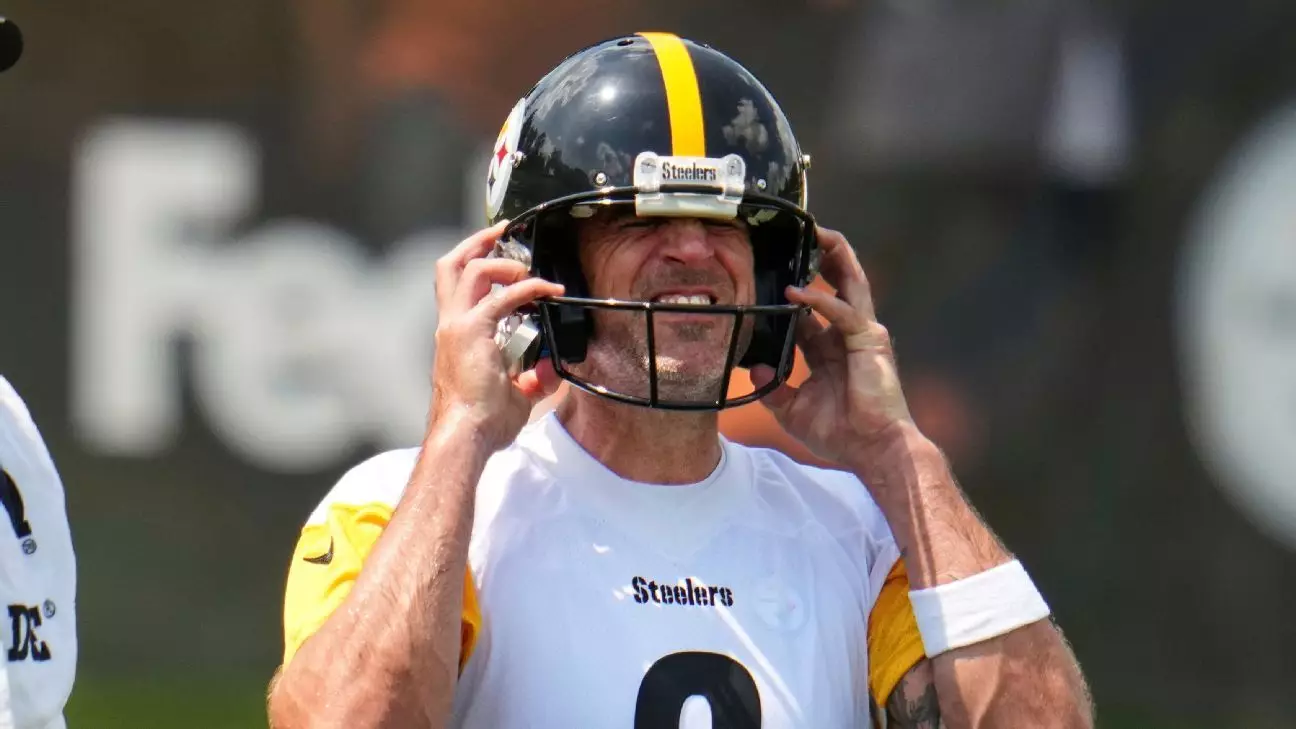Few athletes exemplify the intersection of experience and adaptability more vividly than quarterback Aaron Rodgers. Yet, even a legendary figure like Rodgers faces the relentless march of innovation and safety standards that challenge his comfort zone. His recent frustration with helmet changes underscores a broader truth in sports: progress often comes at a personal cost. The transition from the familiar Schutt Air XP Pro Q11 LTD to the newer, mandated models highlights a tension between tradition and safety—a tension that Rodgers openly criticizes. His candid remarks about the helmet looking like a “spaceship” reveal how deeply ingrained routines and equipment preferences shape an athlete’s confidence and performance.
This issue isn’t solely about aesthetics; it reflects the complex balancing act sports organizations perform between evolving safety protocols and respecting athlete familiarity. For Rodgers, the inability to wear a helmet he’s trusted for two decades symbolizes how even the most resilient athletes are vulnerable to change. His vocal dissatisfaction reveals not just a physical discomfort but a psychological struggle with embracing new paradigms that threaten the comfort of routine. His experience demonstrates that elite athletes, despite their physical prowess, remain deeply tethered to the tools of their trade—tools that, when altered, can undermine their sense of mastery and confidence.
Furthermore, Rodgers’ candidness about the helmet switch underscores a broader disconnect between the NFL’s safety standards and player comfort. It raises questions about how much athletes should sacrifice personal preference for collective safety improvements. His struggle invites a deeper reflection: Are innovations truly making the game safer, or are they disrupting the athlete’s mental and physical rhythm? The nuances of this debate are often lost in headlines, but Rodgers’ honest comments shed light on how safety measures can sometimes clash with an athlete’s identity and routine, affecting performance in subtle yet profound ways.
Resilience in the Face of Minor Adversity: Foregoing Serious Injury
Despite his ongoing frustrations with equipment, Rodgers demonstrated his resilience during a practice incident that could have been much worse. When stepped on by a rookie defensive lineman, Rodgers showed calm professionalism, quickly returning to practice after receiving some ice and treatment. This incident, while minor in comparison to his past injuries, highlights a recurring theme in football: the sport’s unpredictable and sometimes brutal nature.
Rodgers’ response exemplifies a veteran player’s mindset—accepting the physical toll of the game while maintaining focus on his overarching goals. His ability to walk off a potentially injurious situation with composure isn’t just about physical endurance but reflects mental toughness cultivated over years of high-level competition. The fact that he was able to continue practicing underscores a critical idea: resilience isn’t only about bouncing back from injuries but also about managing the minor setbacks that threaten to disrupt routine or confidence.
This incident also subtly emphasizes the importance of professionalism and perspective in professional sports. Rodgers recognizes the risk inherent in his craft but doesn’t let minor hurdles shake his focus. His strategic approach demonstrates how athletes must cultivate resilience not just physically but psychologically—accepting discomfort, managing frustration, and staying committed to their craft despite setbacks that might seem trivial but could impact performance if mishandled.
Rising from Unexpected Setbacks: The Rookie’s Finger Injury
While Rodgers contends with equipment frustrations, rookie quarterback Will Howard faces a more personal setback—a fractured finger sustained during a routine center-quarterback exchange. What might seem like a freak accident, however, whispers a profound truth about the vulnerability embedded in football’s fast-paced, high-contact environment. Howard’s candid reflection on the injury reveals much about the mental toughness required to navigate setbacks at the start of a professional journey.
Howard’s initial confidence in tolerating pain was quickly challenged by the realization that the injury was more severe than anticipated. His description of being unable to grip the football beyond a jammed finger highlights how fragile momentum can be when unanticipated mishaps occur. His acknowledgment of the injury being “week-to-week” sends a clear message: recovery isn’t just about healing physically but also about maintaining mental readiness and patience.
What stands out in Howard’s narrative is his mindset. Despite the frustration, he emphasizes resilience—”how you respond to adversity”—a trait that separates good athletes from great ones. His approach of staying in shape and mentally preparing for a return reflects a seasoned understanding that setbacks are inevitable but manageable if approached with discipline and grit. Howard’s humility and willingness to accept the unpredictability of recovery illuminate a crucial aspect of professional sports: embracing uncertainty without losing sight of eventual goals. His story is a reminder that setbacks, whether injury or equipment-related, are not just obstacles but opportunities to reinforce mental resilience and adaptability.
In both the narratives of Rodgers and Howard, a common thread emerges: the relentless pursuit of excellence amid adversity. Whether it’s grappling with equipment changes that are dictated from afar or learning to accept injuries that threaten to derail progress, elite athletes exemplify perseverance. Rodgers’ dissatisfaction underscores the importance of feeling supported and comfortable in one’s tools, while his calm response to minor injuries underscores seasoned resilience. Conversely, Howard’s injury highlights the unpredictability inherent in the sport and the necessity of mental fortitude when faced with the unexpected.
These stories serve as a testament to the complex, often unheralded battles that define professional athletes’ careers. They are not just about physical prowess; they are about psychological resilience, adaptability, and unwavering commitment. In a sport that demands relentless toughness and continual evolution, the most successful players are those who transform setbacks into stepping stones, refusing to let adversity define their journey. The road to greatness is not smooth, but the ability to navigate it with grit and perspective is what elevates athletes from good to legendary.


Leave a Reply